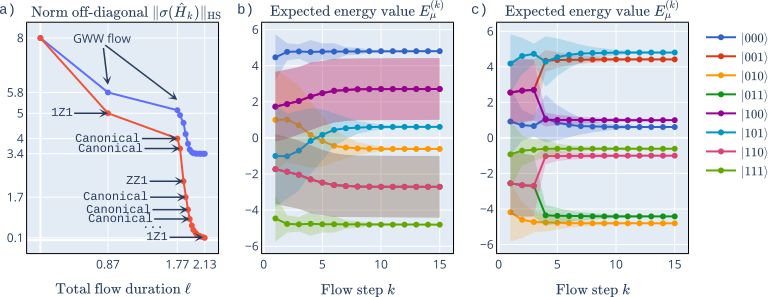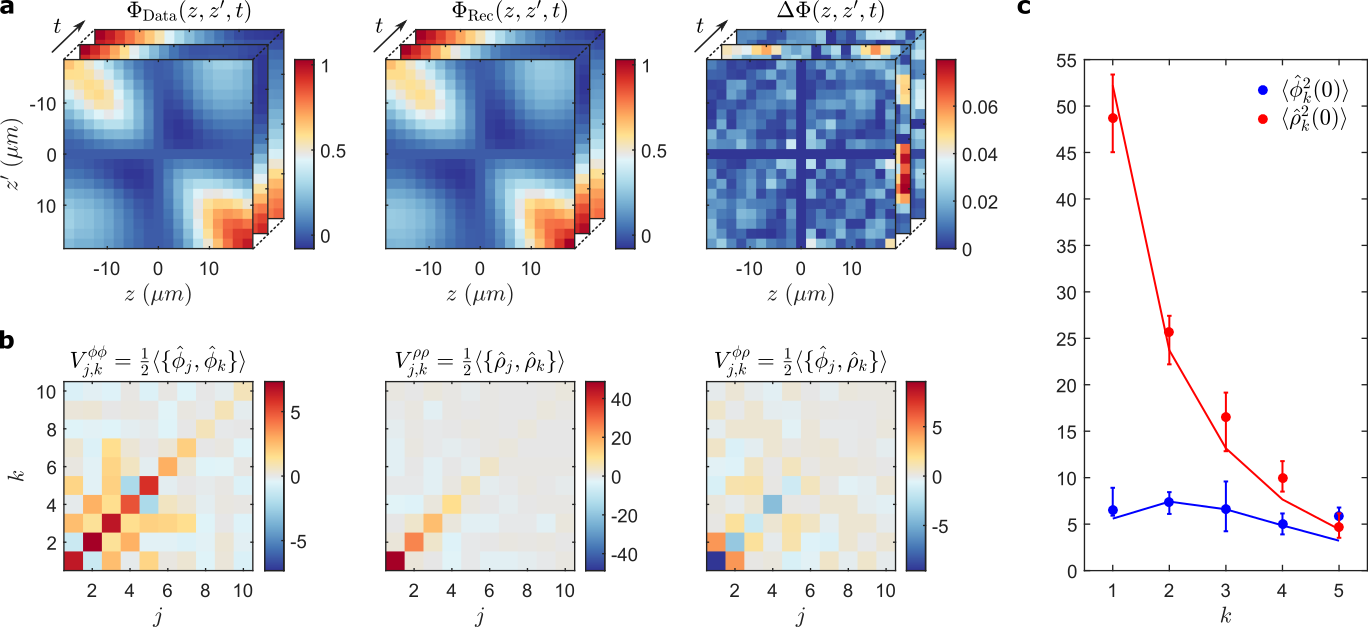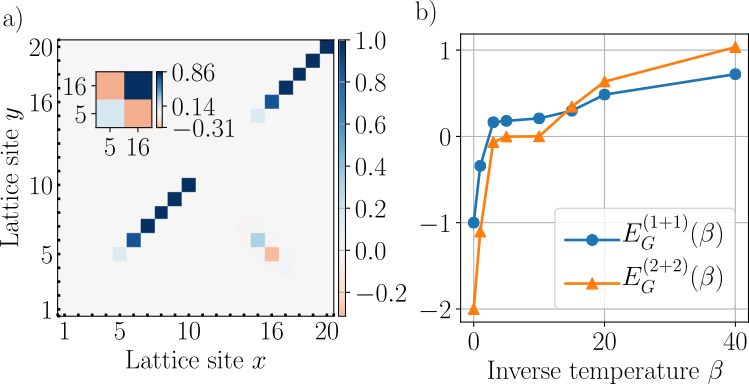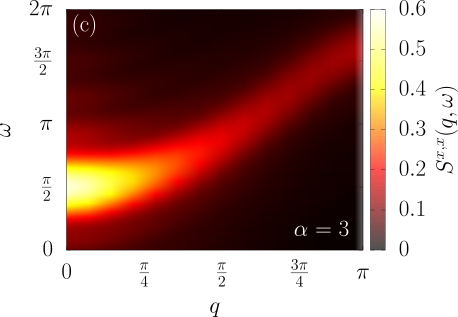Double-bracket quantum algorithms for diagonalization
Marek Gluza
NTU Singapore
slides.com/marekgluza

New quantum algorithm for diagonalization
no qubit overheads
no controlled-unitaries
0
0
0
0
C
0
0
0
0
Simple
=
Easy
Doesn't spark joy :(
New quantum algorithm for diagonalization
building useful quantum algorithms
new approach to preparing useful states
building useful variational circuits
tons of fun maths in the appendix
no qubit overheads
no controlled-unitaries
0
0
0
0



Why double a bracket?
Double-bracket rotation ansatz
antihermitian
Rotation generator:
Input:
Unitary rotation:
Double-bracket rotation:
Double-bracket rotation ansatz
Rotation generator:
Input:
Unitary rotation:
Double-bracket rotation:
- diagonal operator
today: how to choose it to diagonalize and not get stuck?
Double-bracket rotation ansatz
Rotation generator:
Input:
Unitary rotation:
Double-bracket rotation:

Double-bracket rotation ansatz
Rotation generator:
Input:
Double-bracket rotation:
Restriction to off-diagonal
Lemma:
Proof: Taylor expand, shuffle around (fun!)
Double-bracket rotation ansatz
Rotation generator:
Input:
Double-bracket rotation:
Restriction to off-diagonal
Lemma:
Proof: Taylor expand, shuffle around (fun!)
A new approach to diagonalization on a quantum computer

Double-bracket iteration

Głazek-Wilson-Wegner flow
Restriction to off-diagonal
Restriction to diagonal
as a quantum algorithm
(addendo: where it's coming from)
Głazek-Wilson-Wegner flow
as a quantum algorithm
(addendo: where it's coming from)
New quantum algorithm for diagonalization
0
0
0
0

1) Dephasing
2) Group commutator
3) Frame shifting

How to understand the continuous flow?

Piece-wise constant GWW flow discretization

antihermitian
unitary
Double-bracket iteration
Rotation durations:
Input:
Diagonal generators:
A new approach to diagonalization on a quantum computer
Great: we can diagonalize
How to quantum compile?
How to quantum?
Group commutator
0
0
0
0

Want
New bound
Group commutator
0
0
0
0

Frame shifting:
We get a recursive quantum algorithm:
the Hamiltonian tells us how to diagonalize itself
Double-bracket iteration
Rotation durations:
Input:
Diagonal generators:
A new approach to diagonalization on a quantum computer
Great: we can diagonalize
How to quantum compile?
Replace by the group commutator
Group commutator iteration
Double-bracket iteration
Double-bracket iteration
Transition from theory to QPUs
How well does it work?

Variational flow example
Notice the steady increase of diagonal dominance.


Variational vs. GWW flow


Notice that degeneracies limit GWW diagonalization but variational brackets can lift them.

GWW for 9 qubits
Notice the spectrum is almost converged.
How does it work again?



GWW for 9 qubits
Notice that some of them are essentially eigenstates!
How to dynamically program quantum?
Classical recursion
For example:
or
Quantum recursion
Group commutator iterations
diagonalizing \(\hat \psi\)
are in this form
Quantum Dynamic Programming
- Memory usage query: trace out (consume) an instruction state
- Memory usage query: Repeat this procedure M times
Quantum recursion
- What we want memory call unitary:
- QDP does this by using memory usage query:
here \(N\) is the partial transpose of the Choi matrix of \(\mathcal N\)
Quantum Dynamic Programming


with J. Son, R. Takagi and N. Ng
QDP code structure


Talk on Tuesday
What's going on?
Double-bracket flow
Unitary
Satisfies a generalization of the Heisenberg equation
GWW is a particular example
transformation of
Variational double-bracket flows
that are diagonalizing

Variational quantum circuits
boosted by
Variational double-bracket algorithms


with M. Robbiati, A. Pasquale,
E. Pedicillo, X. Li, A. Wright,
J. Son, K. U. Giang, S. T. Goh, J. Knörzer, J. Y. Khoo, N. Ng,
S. Carrazza
What else is there?
Linear programming
Matching optimization
Diagonalization
Sorting
QR decomposition
Toda flow
Double-bracket flow
Runtime-boosting heuristics
Analytical convergence analysis
Group commutator bound
Hasting's conjecture
Relation to other quantum algorithms
Code is available on Github
0
0
0
0
C

Double-bracket quantum algorithms for diagonalization

with J. Son, R. Takagi and N. Ng
Quantum dynamic programming



Material science?
0
0
0
0
C


How to dynamically quantum?
Group commutator
0
0
0
0

Want
New bound
Group commutator
0
0
0
0

Want
How to get ?





Phase flip unitaries
N
S
N
S
N
S
N
S











N
S
N
S
N
S
Phase flip unitaries
Evolution under dephased generators
0
0
0
0

We can make it efficient:
Use unitarity
and repeat many times
New quantum algorithm for diagonalization
0
0
0
0

1) Dephasing
2) Group commutator
3) Frame shifting
Version 2023: Double-bracket quantum algorithms for diagonalization
By Marek Gluza
Version 2023: Double-bracket quantum algorithms for diagonalization
- 475



